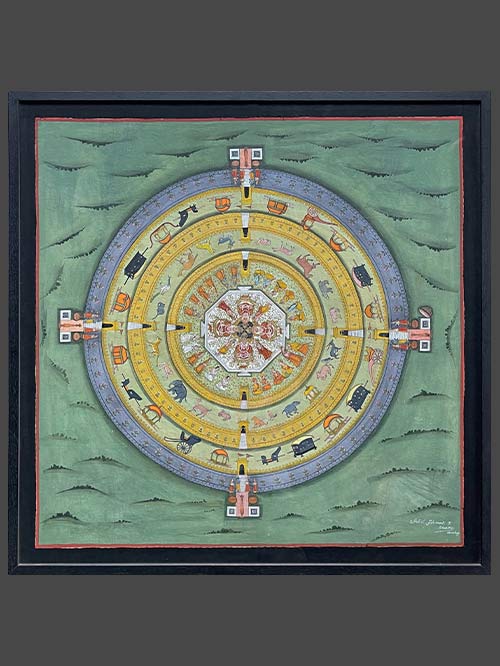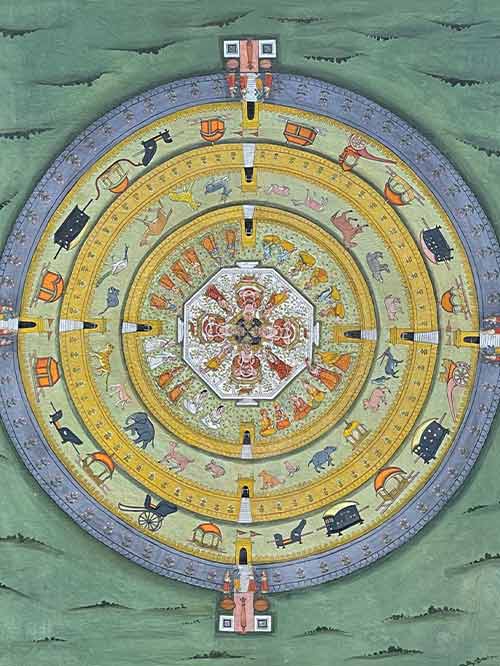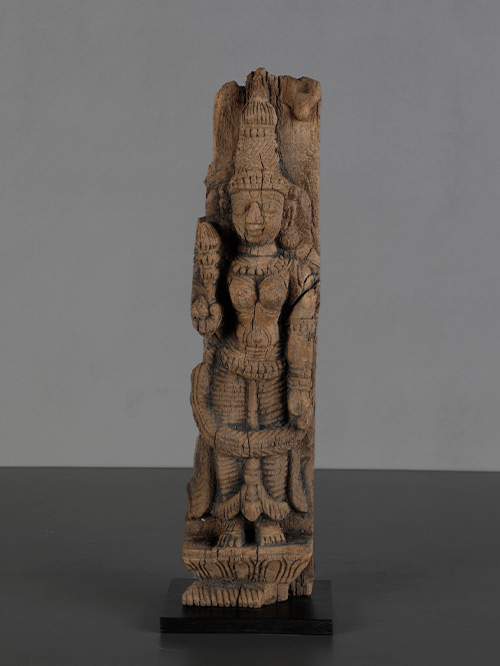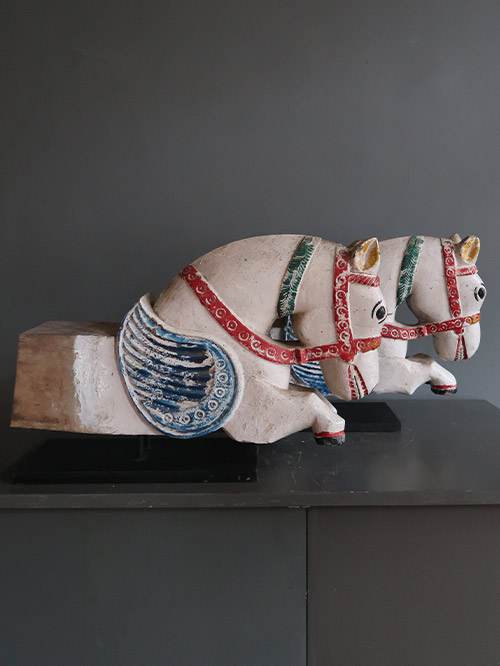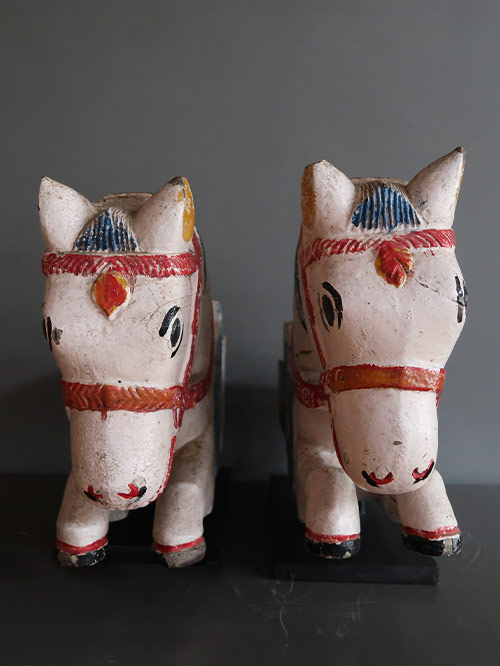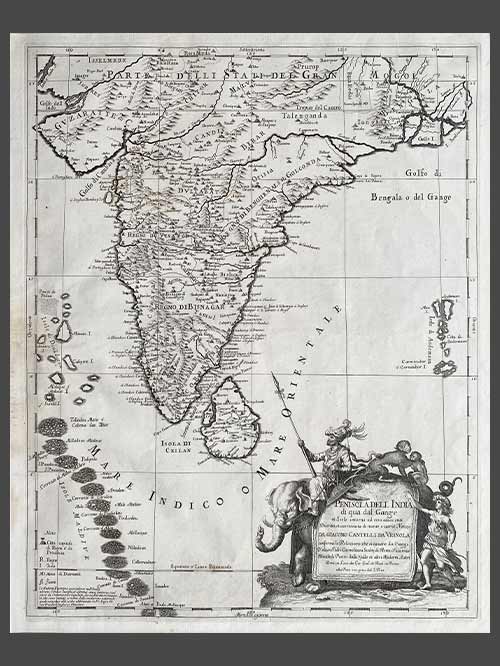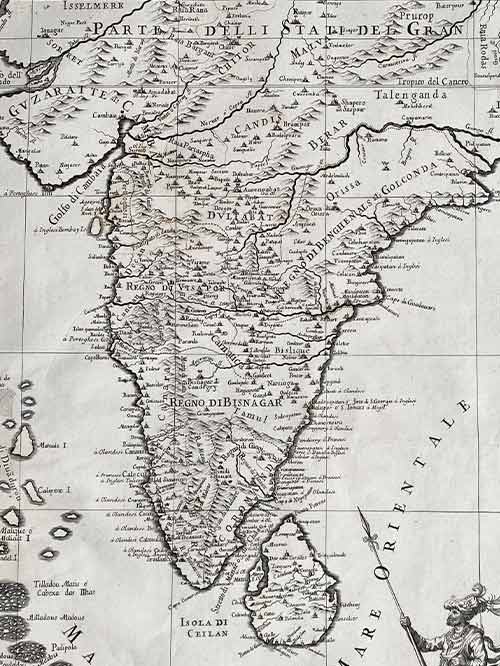Hall of Universal Sermons (Samavasarana)
Maharashtra
Signed by the artist ‘Hemant T., Bombay’
Opaque watercolour on paper
Samavasarana symbolises the Jina’s deliverance of his first teachings after attaining enlightenment during which he is said to be miraculously visible simultaneously in every direction. This particular example provides an unusual presentation of the theme.
The entire enclosure is placed on a vast plain painted in green and covered with tufts of vegetation. The outermost enclosure, said to be made of silver, is filled with numerous vehicles, including European carriages and coaches, carts, sedan chairs, and various kinds of palanquins. Presumably they are conveyances of the dignitaries who have come to hear the sermon. In the second enclosure, made of gold, a wide variety of animals is represented. Even though they are not paired, the mix clearly indicates the tranquil atmosphere of the place. The third enclosure, made of gems, is occupied by divinities, monks, and lay personages. Curiously, each quarter segment includes six figures. All of the women stand, while the men are shown seated. On the octagonal crystal pedestal in the center are four identical Jina images facing in the cardinal directions. The idea is to demonstrate the Jinas simultaneous visibility from all sides.
Framed Size (cms): 94(H) x 94(W)
Framed Size (inches): 37(H) x 37(W)

